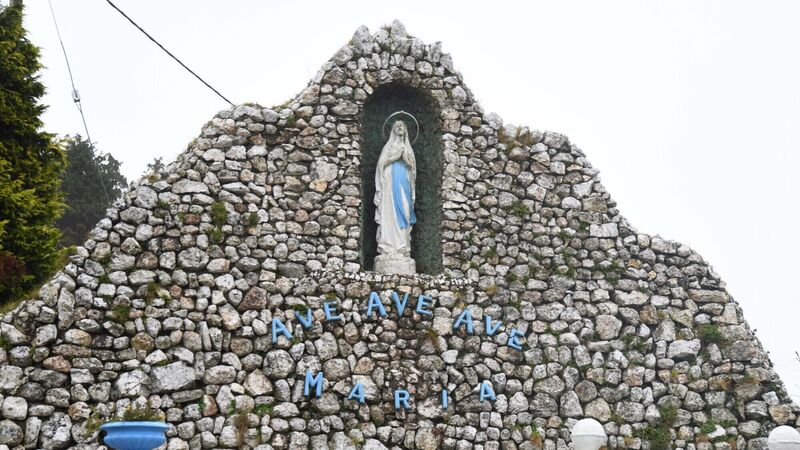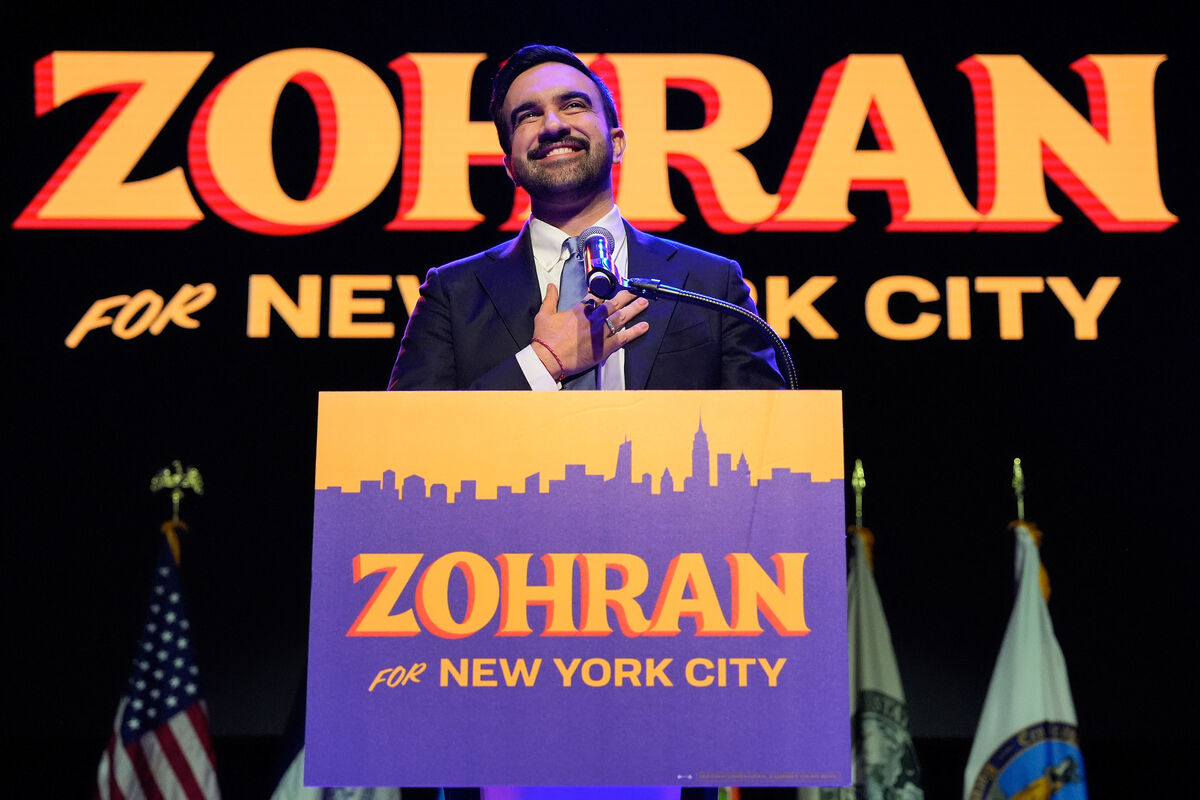Sarah Harte: Church's dismissal of Our Lady as a co-redeemer seems like bad PR

It seemed a bad move that last week, when a new decree from the Vatican’s top doctrinal office, approved by Pope Leo XIV, asked Catholics to stop referring to Mary as someone who helped her son, Jesus, save the world from damnation. Picture: Denis Minihane
So, what do Catherine Connolly, Zohran Mamdani and Pope Leo have in common? All three have been in the news, but only two are arguably down with the kids.
Zohran Mamdani, the new New York City mayor, and Catherine Connolly, the new president of Ireland, ran standout, digitally savvy campaigns that attracted new fans, many of them young.
When Connolly was elected, the columnist Breda O’Brien (a conservative voice in a sea of liberalism and a committed Catholic) complained the vibe-based politics that elected Catherine Connolly were powerful but ultimately empty.
You could frame it differently and say Connolly and Mamdani’s campaigns offer a valuable lesson for the Catholic Church with a bums on seats problem, seeking to attract new, younger members because values feel sexy now.

Incidentally, you will never hook younger voters with serious analysis. First, you have to hook them on socials with your butterfly net and lure them in. You also need to use podcasts cleverly.
Mamdani is a Muslim who inspired fans to rock in t-shirts and declare themselves Jews for Mamdani (not an easy task in polarised America). Connolly mobilised voters, including centrist voters who were attracted to the fact she seemed to stand for something.
On the other side of the fence, Maria Steen — had she received enough nominations — could have run a good race. Several people surprised me by saying they would vote for her even though they believed in divorce, gay marriage and abortion. She might have lassoed voters because, in her let's-return-to-the-1950s way, she also offered substance.
One conclusion is people are thirsty for meaning. Also, a clear backlash is under way against the status quo.
In this vein, it seemed a bad move that last week, when a new decree from the Vatican’s top doctrinal office, approved by Pope Leo XIV, asked Catholics to stop referring to Mary as someone who helped her son, Jesus, save the world from damnation.
Apparently, Mary only prayed for her son. She is not a co-redeemer. The headline is she must not eclipse Jesus. It’s gone too far, folks. Her fanbase is too large. A friend snorted: “You couldn’t make this shit up.”
Whether Mary can be called a co-redemptrix has been a long-standing subject of debate among the religious. Pope John Paul II was initially on board the Mary as co-redeemer train (his motto concerning Mary was ‘totus tuus’, meaning totally yours), but he publicly pivoted when the Vatican’s doctrinal office expressed scepticism. Pope Francis fervently rejected the idea as nonsense.
Apart from reconsidering jettisoning Our Lady as a girl boss, the Catholic Church should use social media to preach the word in a savvy way to reach younger people.
Actually, the hierarchy is cottoning on to that. In July this year, they hosted an event, Jubilee for Digital Missionaries, for Catholic influencers, recognising the internet as its own mission and hailing it as a milestone for online evangelisation. Grasping the goldfish attention span of a younger generation, they wisely promised no long sermons.
Influencer clerics (a growing number) include the tattooed Italian Fr Giuseppe Fusari, who combines God’s love with bodybuilding and art history. The Portuguese DJ priest Guilherme Peixoto, who gives it up for our Lord by dropping tunes on TikTok and playing sets at raves, had his headphones blessed by the pope.
And of course, in September, Italian teenager Carlo Acutis, otherwise known as ‘God’s influencer’, became the first millennial saint for his evangelical work in the digital world.
The Catholic Church naturally lends itself to leveraging social media. The melodrama, the incense, the flamboyantly dressed cadre, complete with rings, cloaks, soutanes and hats that give off non-binary vibes, the icons, and the magnificent buildings.
Also, the beautiful rosary chant, which might appeal to those paying for meditation and mindfulness in ‘Anyone But Jesus’ spaces. There are possibilities for merch (Lourdes, but done better?) The conditions are fertile for capturing young people, as reports indicate teenagers are increasingly turning to AI chatbots for emotional support. If that isn’t a cry for connection, what is?
Yes, young people's friendships now span digital and physical spaces, but serious questions remain about the consequences of inadequate safety measures for AI chatbots on vulnerable teens. Chatbot site Character.ai will cut off teenagers from conversations with virtual characters from November 25, following severe criticism about how AI bots mimic genuine relationships for young users, sometimes with catastrophic effects.
According to World Health Organization figures released last month, one in seven adolescents experiences a mental health disorder, so the Church can offer a sense of emotional focus and community. A sense of having a higher power to anchor you. A sense of belonging to a tribe and a place to show up — Mass.
Current influencers aside, I have several loose thoughts on how they can take it to the next level. Clips of charismatic clerics speaking at rallies, remixed into tight videos with Catholic anthems, Ave Maria (Schubert or Guno, a tough call), requiems, Panis Angelicus, or Mozart’s Masses.
The charismatic movement was a PR disaster. According to Catholic Answers, the movement began at a retreat at Duquesne University in Pittsburgh, Pennsylvania, in 1967, before spreading like an ill-conceived virus (my words, not Catholic Answers), and was based on the rejection of anything ancient, lofty, or highbrow.
It seemed to centre on well-intentioned goofs strumming on guitars, presumably driving congregants to the nearest pub with their amateurish folk music. Think the folk duo in singing ‘Can’t Live without You’.
Bottom line, the Catholic Church has a treasury of sacred music or ‘Thesaurus musicae sacrae’, so they should lean into it.

Plus, an Gaeilge is hot now. Could there be anything more rousing than singing the Ár n-Athair in a collective? They could push pictures of hot young women in mantillas with downcast eyes. Really leverage the big-band Catholic glamour.
Most importantly, they could communicate the idea of ‘For an Ireland you’re part of’. The true Catholic message about social justice could resonate in a country where the younger generation has been priced out of Dublin and other cities due to the spiralling cost of living, and where, for many, basic necessities have become luxuries.
Mamdami, who talks about social justice, won in areas of New York where people were under 45 and rented. His victory has been described as an existential backlash.
The Catholic Church could offer an inclusive Ireland where all feel recognised and where belonging is not simply a mirage. We live in a sick world where Elon Musk is about to become a trillionaire, demonstrating how political systems and unfettered capitalism and tech have let society down badly.
God forbid Mary could have her day in the sun. Badly done, guys (it’s always guys where Catholicism is concerned). So, think about your messaging. Don’t pretend this ‘Mary wasn’t all that’ isn’t extraneous, man-made nonsense, because these dictates alienate many who want to be on your side.















